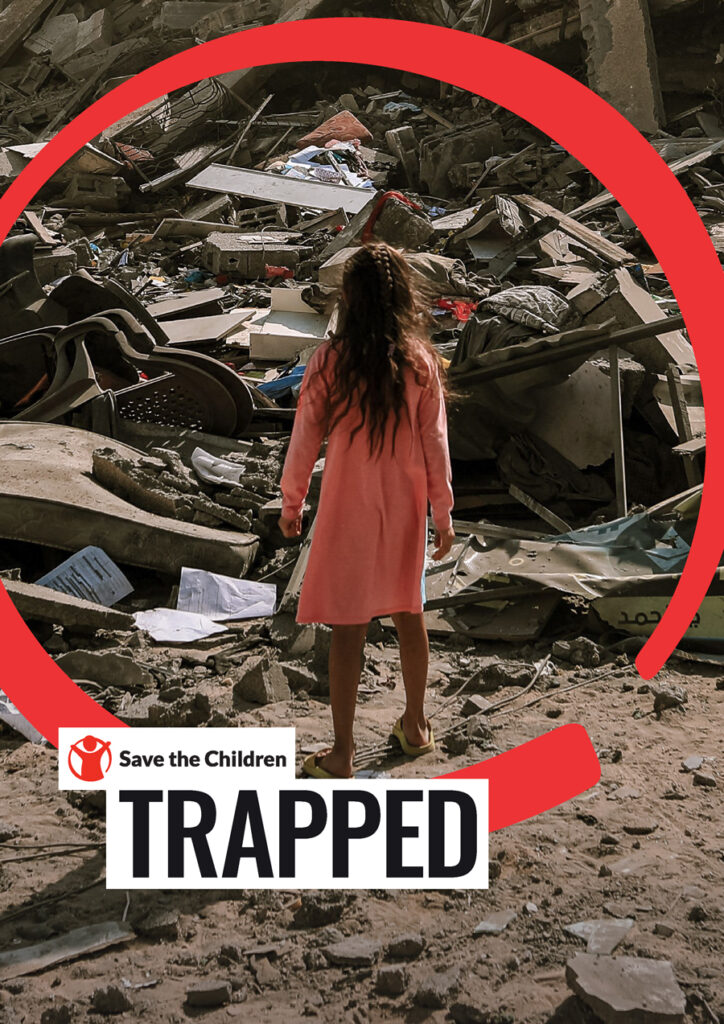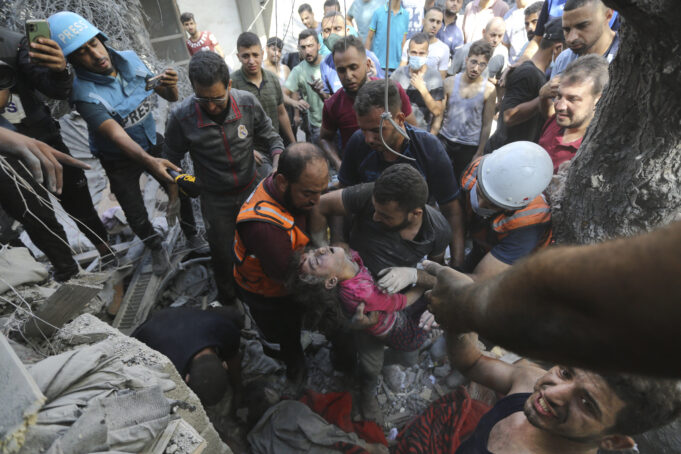by Brett Wilkins
In addition to killing, maiming, and forcibly displacing hundreds of thousands of Palestinian children, Israel’s genocidal assault on Gaza has wrought tremendous psychological damage upon kids in the embattled strip, as detailed by a Save the Children report published March 12.
The charity’s report—entitled Trapped and Scarred: The Compounding Mental Harm Inflicted on Palestinian Children in Gaza—examines how “five months of violence, displacement, starvation, and disease on top of nearly 17 years of a blockade have caused relentless mental harm to children in Gaza.”
Jason Lee, Save the Children’s country director for the occupied Palestinian territory, said in a statement that “it is unacceptable that any child should contend with the horrors that those in Gaza have lived through.
While dodging bombs and bullets, fleeing through streets littered with debris and corpses, being forced to sleep in the open air, and going without the basic food and clean water they need to survive, children in Gaza are going through a period of mass-scale shock and grief.”
“Children in Gaza were already living with unimaginable distress following 16 years of blockade and successive escalations in violence,” Lee added. “This war and the physical and mental scars it is leaving on children is further eroding their resilience.”
One mother of four children aged 7-14 told Save the Children that she “wouldn’t even say that their mental health has deteriorated—it’s been obliterated. Complete psychological destruction.”

Another Gaza mother said: “Our children have already lived through different wars. They already lacked resilience and now it’s very difficult to cope. The children are scared, angry, and can’t stop crying. Even many adults do the same. This is too much for adults to cope with, let alone children.”
Waseem, a father, said that “children here have seen everything. They’ve seen the bombs, the deaths, the bodies—we can’t pretend to them anymore. Now they understand and have seen everything. Now, my son can even tell what types of explosives are falling—he can hear the difference.”
According to the United Nations Children’s Fund, Gaza is “the world’s most dangerous place to be a child,” as more than 13,000 Palestinian minors have been killed, and many thousands more wounded, by Israeli attacks and hundreds of thousands of children are among the approximately two million of Gaza’s 2.3 million people who have been forcibly displaced by Israel’s bombardment and invasion.
Palestinian youth who survive Israel’s bombs and bullets face rampant disease and hunger that’s now killing not only infants and children but also teens and elderly adults as Israeli soldiers and civilians alike continue to block lifesaving aid from entering Gaza. U.N. experts say Israel’s forced starvation of Gazans is a genocidal act of the kind Israel was ordered to prevent in the International Court of Justice’s (ICJ) January 26 preliminary ruling in response to South African-led allegations of Israeli genocide.
Many surviving Palestinian children have lost one or both parents. Some have lost entire families. A new acronym has even been coined to describe some of these orphans: WCNSF, or “wounded child, no surviving family.”
Around 1,000 of those wounds required the amputation of one or more of a child’s limbs. Due to a lack of medication caused by Israel’s siege, many little arms and legs have been sawed off without anesthesia. Screams and prayers fill the air of makeshift operating rooms, as Israel’s relentless onslaught has obliterated Gaza’s hospitals, clinics, and healthcare infrastructure.
Sometimes, even survivor stories have tragic endings, as in the case of Dunia Abu Mohsen, a 12-year-old who first lost one of her legs, her parents, and two siblings in an Israeli airstrike, and then her life when an Israel Defense Forces (IDF) tank fired a shell at the hospital in which she was recovering. Or 2-year-old Kareem Abu Zaid, who survived three different Israeli airstrikes that killed close relatives including his mother and sister before he was killed in a fourth IDF strike.
The Geneva-based Euro-Mediterranean Human Rights Monitor has documented numerous cases of Israeli troops summarily executing civilians including women and children. The group also accuses Israeli invaders of kidnapping Palestinian children and forcibly transferring them from Gaza.
UN experts, meanwhile, have urged an investigation into reports that Israeli troops have arbitrarily detained, sexually abused, and executed Palestinian women and girls in Gaza.
Save the Children’s report also notes the trauma endured by parents and caregivers.
“The emotional distress of dodging bombs and bullets, losing loved ones, being forced to flee through streets littered with debris and corpses, and waking up every morning not knowing if they will be able to eat has also left parents and caregivers increasingly unable to cope,” the group said. “The support, services, and tools they need to care for their children are further and further out of reach.”
Pregnant mothers have had an especially rough time, often being forced to give birth in tents, streets, and even public toilets due to Israel’s destruction of homes and healthcare facilities. Some mothers and hospital staff fleeing from Israeli bombs and invading troops have been forced to abandon newborn babies to die alone and decompose.
Two mothers have died every hour since the start of the genocide, UN Women estimated in January.
Gaza’s mental healthcare infrastructure has also been devastated by the Israeli onslaught at a time when around half of the enclave’s 1.1 million children require psychological support.
Save the Children urged a cease-fire and “effective implementation of the provisional measures from the ICJ,” as well as for Israel to allow the free flow of aid into Gaza to prevent deaths from starvation and disease.
“There is still hope that, with adequate support, this can be reversed,” Lee stressed. “Throughout childhood, there are critical windows of opportunity to address the impact of conflict. But none of this is possible without an immediate, definitive cease-fire and safe, unfettered aid access so that humanitarians can provide the critical support needed.”













